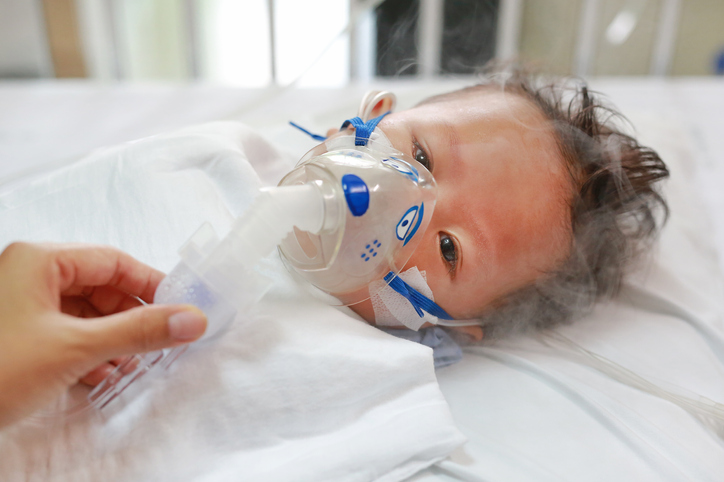A rash of respiratory syncytial virus (RSV) cases this summer is prompting the alarm that RSV will be more of a threat to children this fall than COVID-19.
RSV is a leading pediatric illness in the fall and winter months but is not commonly seen in the summer. In the last week of July 2020, fewer than a dozen cases were recorded. This year, health agencies through the Centers for Disease Control and Prevention confirmed nearly 2,000 cases of the virus, 200 times higher than the previous year, and that may be an underestimate due to summer testing protocols.
In a health advisory, the Centers for Disease Control and Prevention (CDC) issued a warning about increasing cases, particularly noted in the southern states, many of which were found to have higher than normal numbers for the summer season.
Masks Won’t Help
A much larger threat to the pediatric population than COVID-19, RSV results in approximately 58,000 hospitalizations and several hundred deaths of children under age 5 annually. Another high-risk population, people over 65, can develop pneumonia from RSV, resulting in 14,000 deaths yearly, according to the Associated Press.
The mortality comparison for RSV and the COVID-19 Delta variant in newborns to four-year-olds is “sobering,” said Andrew Bostom, M.D. a clinical trialist, an epidemiologist at Brown University. On average, there are346 RSV deaths per year versus 77 COVID-19 deaths in 2020 and 54 in 2021.
Masking children is more than socially and developmentally destructive, it may cause hypercapnia, a condition in which increased carbon dioxide is found in the blood/plasma, potentially compromising respiratory health in a high-risk time, Bostom says.
“Masking is useless, proven by randomized control trials, for preventing the spread of respiratory viruses, certainly in the community, likely because of particle size dynamics,” Bostom said.
“Flu in kids zero to 17 years old, and RSV certainly in kids less than 5 years old, cause greater mortality by at least two to three times,” Bostom said. “And with regard to pandemic flu like H2N1, up to 10 times, on a yearly basis.”
Rethink Focus on COVID-19
Over the past year, the media and health agencies have focused on COVID-19 and its impact on children. Children have been ordered to wear masks in school again this fall and the CDC recommends COVID-19 vaccines for children as young as 12.
The statistics paint a different picture of how deadly COVID-19 is to children. Out of 4.8 million children who tested positive since the onset of the COVID-19 pandemic in the United States, zero to 0.03 percent resulted in death, according to the American Academy of Pediatrics (AAP). The AAP noted that “severe illness due to COVID-19 is uncommon among children.”
The CDC recommends hand washing, covering coughs and sneezes with a tissue or cloth, avoiding close contact, and frequent cleaning of surfaces in order to control RSV. There are no vaccines to prevent RSV, but the drug palivizumab can be used to prevent severe RSV in children and infants, according to the CDC.
Ashley Bateman (bateman.ae@googlemail.com) writes from Virginia.

